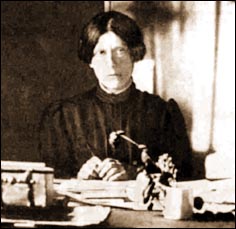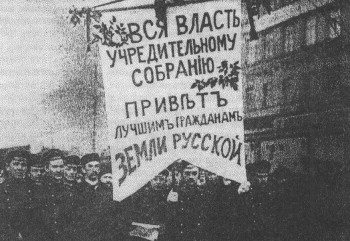|
Arsk Uprising
The Arsk uprising ( tt-Cyrl, Арча фетнәсе, translit=Arça fetnäse) was a Tatar peasant rebellion against the Soviet power in Kazan, Layesh, Mamadysh uyezds of Kazan Governorate. It started on October 25, 1918, against the prodrazvyorstka policy. On November 10 rebels took the town of Arsk Arsk ( rus, Арск, p=ˈarsk; tt-Cyrl, Арча, ''Arça'') is a town and the administrative center of Arsky District in the Tatarstan, Russia, located on the Kazanka River, from the republic's capital of Kazan. As of the 2010 Census, its p .... Red guards with cannons were sent to suppress the rebellion. On November 15 the rebellion was defeated, 31 rebels were killed, 11 wounded. The participants of the rebellion repaid a contribution to the Soviet power. References *{{TES, Arça fetnäse/Арча фетнәсе Anti-Bolshevik uprisings History of Tatarstan Rebellions in Russia Peasant revolts 1918 in Russia Conflicts in 1918 Rebellions in the Soviet Union ... [...More Info...] [...Related Items...] OR: [Wikipedia] [Google] [Baidu] |
Left-wing Uprisings Against The Bolsheviks
The left-wing uprisings against the Bolsheviks, known in anarchist literature as the Third Russian Revolution, were a series of rebellions, uprisings, and revolts against the Bolsheviks by oppositional left-wing organizations and groups that started soon after the October Revolution, continued through the years of the Russian Civil War, and lasted into the first years of Bolshevik rule of the Soviet Union. They were led or supported by left-wing groups such as some factions of the Socialist Revolutionary Party, Left Socialist-Revolutionaries, Mensheviks, and anarchists. Generally, the uprisings began in 1918 because of the Bolshevik assault on Soviet democracy, the signing of the Treaty of Brest-Litovsk (which many saw as giving overly generous concessions to the Central Powers also seen by some as limiting the revolutionary potential causing the workers, soldiers and peasantry outside the Soviet state to rebel against the continuing strife caused by the war), and opposition to Bo ... [...More Info...] [...Related Items...] OR: [Wikipedia] [Google] [Baidu] |
Uyezd
An uezd (also spelled uyezd; rus, уе́зд, p=ʊˈjest), or povit in a Ukrainian context ( uk, повіт), or Kreis in Baltic-German context, was a type of administrative subdivision of the Grand Duchy of Moscow, the Russian Empire, and the early Russian SFSR, which was in use from the 13th century. For most of Russian history, uezds were a second-level administrative division. By sense, but not by etymology, ''uezd'' approximately corresponds to the English "county". General description Originally describing groups of several volosts, they formed around the most important cities. Uezds were ruled by the appointees ('' namestniki'') of a knyaz and, starting from the 17th century, by voyevodas. In 1708, an administrative reform was carried out by Peter the Great, dividing Russia into governorates. The subdivision into uyezds was abolished at that time but was reinstated in 1727, as a result of Catherine I's administrative reform. By the Soviet administrative reform of 1923 ... [...More Info...] [...Related Items...] OR: [Wikipedia] [Google] [Baidu] |
1918 In Russia
Events from the year 1918 in Russia Events January-March *9 January - the creation of the Volunteer Army was officially announced *18–19 January - Russian Constituent Assembly held its first and last meeting *20 January - of Andrei Shingaryov and Fyodor Kokoshkin, members of the liberal Cadet Party Central Committee, by the revolutionary sailors *22 January - Ukrainian People's Republic proclaims its independence *23-31 January - 3rd All-Russian Congress of Soviets approved the dissolution of the Constituent Assembly and adopted a resolution "On a new designation of the supreme state power". *27 January - Finnish Civil War begins *28 January - Communist government issues a decree on the foundation of the Red Army *29 January - Battle of Kruty between Ukrainian and Bolshevik forces *30 January - Odessa Soviet Republic proclaimed *9 February - Ukrainian People's Republic and the Central powers signed the Treaty of Brest-Litovsk *14 February - the Gregorian calendar ("new styl ... [...More Info...] [...Related Items...] OR: [Wikipedia] [Google] [Baidu] |
Peasant Revolts
This is a chronological list of conflicts in which peasants played a significant role. Background The history of peasant wars spans over two thousand years. A variety of factors fueled the emergence of the peasant revolt phenomenon, including: *Tax resistance *Social inequality *Religious war *National liberation *Resistance against serfdom *Redistribution of land *External factors such as plague and famine Later peasant revolts such as the Telangana Rebellion were also influenced by agrarian socialist ideologies such as Maoism. The majority of peasant rebellions ended prematurely and were unsuccessful. Peasants suffered from limited funding and lacked the training and organisational capabilities of professional armies. Chronological list The list gives the name, the date, the peasant allies and enemies, and the result of these conflicts following this legend: : : : : See also * Servile Wars * Peasant movement * Popular revolts in late-medieval Europe * Maoism * Unite ... [...More Info...] [...Related Items...] OR: [Wikipedia] [Google] [Baidu] |
Rebellions In Russia
Rebellion, uprising, or insurrection is a refusal of obedience or order. It refers to the open resistance against the orders of an established authority. A rebellion originates from a sentiment of indignation and disapproval of a situation and then manifests itself by the refusal to submit or to obey the authority responsible for this situation. Rebellion can be individual or collective, peaceful (civil disobedience, civil resistance, and nonviolent resistance) or violent (terrorism, sabotage and guerrilla warfare). In political terms, rebellion and revolt are often distinguished by their different aims. While rebellion generally seeks to evade and/or gain concessions from an oppressive power, a revolt seeks to overthrow and destroy that power, as well as its accompanying laws. The goal of rebellion is resistance while a revolt seeks a revolution. As power shifts relative to the external adversary, or power shifts within a mixed coalition, or positions harden or soften on eithe ... [...More Info...] [...Related Items...] OR: [Wikipedia] [Google] [Baidu] |
History Of Tatarstan
The region of Tatarstan, now within the Russian Federation, was inhabited by different groups during prehistory. The state of Volga Bulgaria grew up during the Middle Ages and for a time was subject to the Khazars. The Volga Bulgars became Muslim and incorporated various Turkic peoples to form the modern Volga Tatar ethnic group. The region came under the domination of the Khanate of Kazan in the 15th century. The khanate was conquered by Ivan the Terrible in 1552 and abolished in 1708. This period was marked by settlement of the area by Russians and attempts at conversion to Orthodox Christianity, provoking a number of rebellions among the Tatars and neighbouring groups. In the late 18th and 19th centuries industry developed, economic conditions improved and Tatars achieved more equal status with Russians. However, Tatar national consciousness was growing, and upon the October Revolution of 1917, national institutions were established and independence declared as the Idel-Ura ... [...More Info...] [...Related Items...] OR: [Wikipedia] [Google] [Baidu] |
Prodrazvyorstka
''Prodrazvyorstka'', also transliterated ''Prodrazverstka'' ( rus, продразвёрстка, p=prədrɐˈzvʲɵrstkə, short for , ) was a policy and campaign of confiscation of grain and other agricultural products from peasants at nominal fixed prices according to specified quotas (the noun ''razvyorstka,'' , and the verb ''razverstat'', refer to the partition of the requested total amount as obligations from the suppliers). This strategy often led to the deaths of many country-dwelling people, such as its involvement with the Holodomor famine. The term is commonly associated with war communism during the Russian Civil War when it was introduced by the Bolshevik government. However, Bolsheviks borrowed the idea from the grain ''razvyorstka'' introduced in the Russian Empire in 1916 during World War I. World War I grain razvyorstka 1916 saw a food crisis in the Russian Empire. While the harvest was good in Lower Volga Region and Western Siberia, its transportation by railroa ... [...More Info...] [...Related Items...] OR: [Wikipedia] [Google] [Baidu] |
Mamadysh
Mamadysh (russian: Мамады́ш; tt-Cyrl, Мамадыш, ''Mamadış'') is a town and the administrative center of Mamadyshsky District in the Republic of Tatarstan, Russia, located on the Vyatka River (Kama's tributary), from the republic's capital of Kazan. As of the 2010 Census, its population was 14,435. History Known since the end of the 14th–the beginning of the 15th century, it has been known as the '' selo'' of Troitskoye () from the beginning of the 17th century.''Inhabited Localities of the Republic of Tatarstan'', p. 181 Town status was granted to it in 1781. It served as the administrative center of a '' kanton'' in 1920–1930 and as the administrative center of a district since 1930. Administrative and municipal status Within the framework of administrative divisions, Mamadysh serves as the administrative center of Mamadyshsky District, to which it is directly subordinated.Order #01-02/9 As a municipal division, the town of Mamadysh is incorpora ... [...More Info...] [...Related Items...] OR: [Wikipedia] [Google] [Baidu] |
Arsk
Arsk ( rus, Арск, p=ˈarsk; tt-Cyrl, Арча, ''Arça'') is a town and the administrative center of Arsky District in the Tatarstan, Russia, located on the Kazanka River, from the republic's capital of Kazan. As of the 2010 Census, its population was 18,114. Etymology The Tatar name of the town () can be translated as " Udmurt's" or "Udmurtian". History It was founded at the end of the 14th century''Inhabited Localities of the Republic of Tatarstan'', p. 63 by Volga Bulgarians. It was the seat of Archa Darugha (a type of subdivision) during the Khanate of Kazan period. Even though the town was located in the area mostly populated by Tatars, the larger part of the ''darughas population was Udmurt. It is possible that earlier population of this area was also Finnic, who later assimilated with the Tatars. Arsk was one of the strongest forts in the khanate. In 1506, it was the site of the Battles of Arsk Field, in which Tatar forces were defeated by the Russia ... [...More Info...] [...Related Items...] OR: [Wikipedia] [Google] [Baidu] |
Laishevo
Laishevo (russian: Лаи́шево; tt-Cyrl, Лаеш, ''Layış'') is a town and the administrative center of Laishevsky District in the Republic of Tatarstan, Russia, located on the right bank of the Kama River on the shore of the Kuybyshev Reservoir, southeast of the republic's capital of Kazan. As of the 2010 Census, its population was 7,735. History Known as Laishev () since the times of the Khanate of Kazan, it was granted town status in 1781.''Inhabited Localities of the Republic of Tatarstan'', p. 167 In 1920–1927, it served as the administrative center of a '' kanton''. In 1926, it was demoted in status to a '' selo'' and given its present name. In 1950, it was granted urban-type settlement status. It served as the administrative center of a district in 1930–1963 and then again since 1965. Town status was granted to it again in 2004. Administrative and municipal status Within the framework of administrative divisions, Laishevo serves as the administ ... [...More Info...] [...Related Items...] OR: [Wikipedia] [Google] [Baidu] |
Soviet Power
The political system of the Soviet Union took place in a federal single-party soviet socialist republic framework which was characterized by the superior role of the Communist Party of the Soviet Union (CPSU), the only party permitted by the Constitution. Background The Bolsheviks who took power during the October Revolution, the final phase of the Russian Revolution, were the first communist party to take power and attempt to apply the Leninist variant of Marxism in a practical way. Although they grew very quickly during the Revolution from 24,000 to 100,000 members and got 25% of the votes for the Constituent Assembly in November 1917, the Bolsheviks were a minority party when they took power by force in Petrograd and Moscow. Their advantages were discipline and a platform supporting the movement of workers, peasants, soldiers and sailors who had seized factories, organized soviets, appropriated the lands of the aristocracy and other large landholders, deserted from the army ... [...More Info...] [...Related Items...] OR: [Wikipedia] [Google] [Baidu] |





.png)